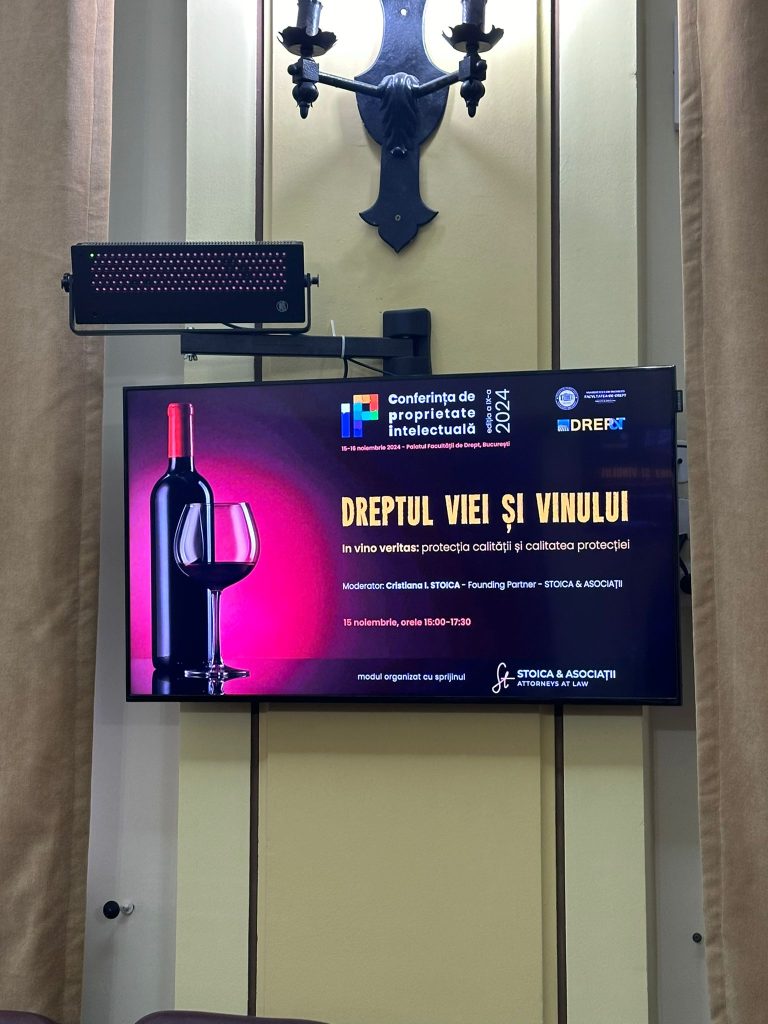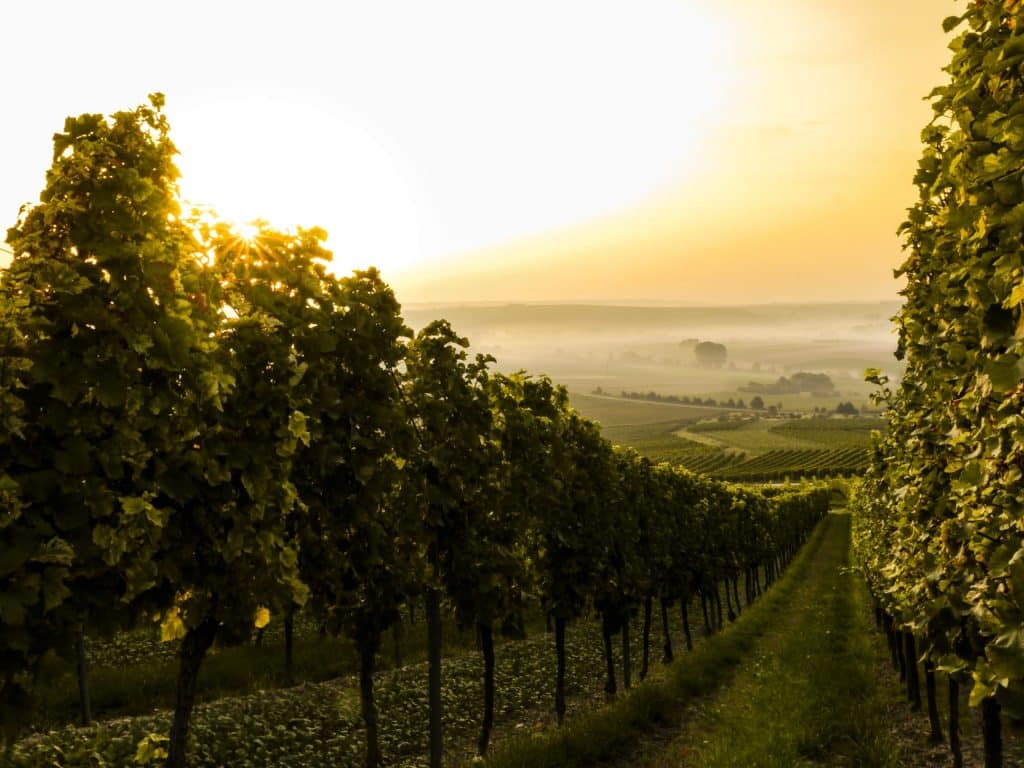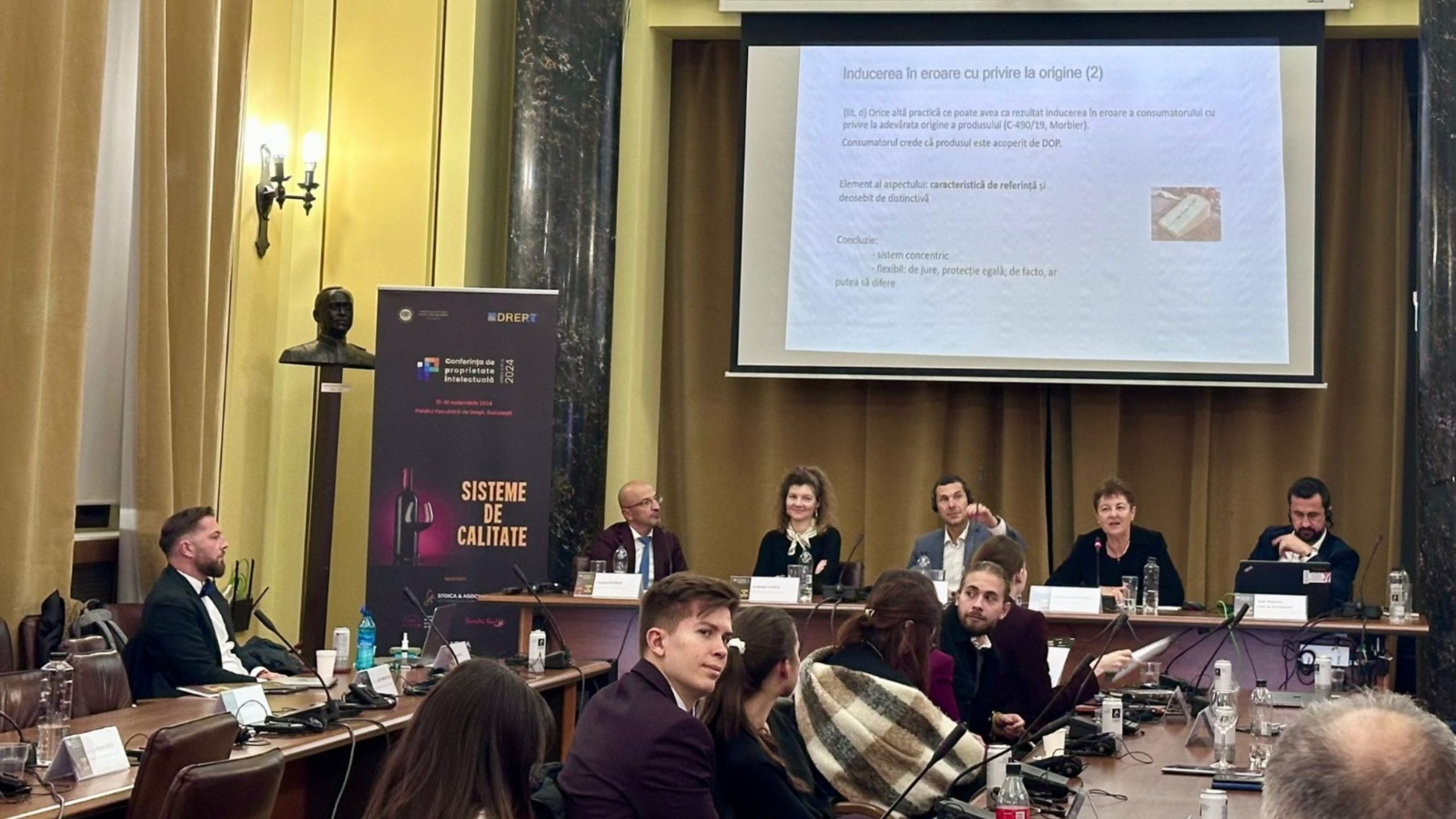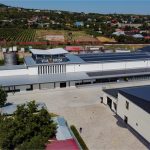This weekend, on November 15–16, the Constantin Stoicescu Hall of the University of Bucharest’s Faculty of Law hosted the 9th edition of the Intellectual Property Conference. On the first day, one of the panels focused on a highly relevant topic for Romania’s wine industry: "The Law of Vineyards and Wine. In Vino Veritas: Quality Protection and the Protection of Quality." The series of Intellectual Property Conferences is organized by the Faculty of Law at the University of Bucharest and the Faculty of Law at West University, with support from the Stoica & Asociații law firm.
A Panel of Experts
The conference featured two distinguished experts: Jean-Baptiste Thial de Bordenave, lawyer at Mineral Avocats and president of the International Wine Law Association, and Lionel Lalague, Director of Public and International Affairs at BNI (Bordeaux and Cognac, France). They presented a detailed overview of French legislation and practices regarding labeling and traditional mentions, along with a review of key aspects that characterize consumer protection in the current context of digitalization, sustainability, and health safety in the wine and spirits sector.
Stoica & Asociații was represented by attorneys Cristiana I. Stoica, founding partner and moderator, as well as Dragoș Bogdan and Andreea Stoica, co-managing partners. Their presentations highlighted legislative and jurisprudential aspects concerning the application of regulations on controlled designations of origin and geographical indications in the wine sector, with highly useful examples from the case law of the Court of Justice of the European Union (CJEU).
An Old Yet Timeless Definition
Although the world of wine is complex, with national and international institutions overseeing the regulation of wine production and marketing, defining quality levels, intellectual property, and advertising, the definition of wine itself has remained largely unchanged since 1889, under the Griffe Law: "a product obtained exclusively from the fermentation of fresh grapes or must from fresh grapes." The only modern addition to this law has been the definition of a minimum alcohol content of 8.5%, an important specification in the context of new market trends. Furthermore, since 1973, based on the official definition adopted by the International Organisation of Vine and Wine (OIV), no product other than that resulting from the alcoholic fermentation of fresh grapes can bear the name "wine."
Understanding and navigating legal regulations is essential for a country like Romania, which consistently ranks among the top 5–6 wine producers in Europe and the top 15 worldwide. Even though Romanian wine has yet to achieve global success, the significant volume produced and consumed locally, combined with growth prospects, makes wine one of the country’s most important local products.

Legal Tasting – Just a Drop to Get the Taste…
Andreea Stoica, Co-Managing Partner at Stoica & Asociații, invited participants to a "legal tasting." Much like a wine tasting introduces the most representative wines of a winery to be later explored in depth, her presentation on "Quality Protection Systems for Wine" offered an overview of the essential legal regulations surrounding the subject.
Wine is an expression of a country’s culture and tradition, a living and natural product that plays a significant role as an economic driver—not only through sales but also via tourism and related sectors. Loyal to the place of its origin, wine varies based on climatic and geographic conditions, not only between producers or regions but also from year to year. This uniqueness makes it challenging to establish clear quality criteria. Out of the 5,631 Protected Designations of Origin (PDOs) and Geographical Indications (GIs) registered for food products in the European Union, over half—2,978—are for wines. Romania currently holds 34 PDOs and GIs for its wines, Andreea Stoica pointed out.
At present, Romania has approximately 28,000 hectares of vineyards dedicated to producing wines with PDO or GI certification. In 2023, this area yielded 771,000 hectoliters of wine, with the production record being set in 2021, at 1 million hectoliters.

The Purpose of Legislation
Defining wines, PDOs, GIs, and quality tiers serves as more than just a benefit for consumers; it is a crucial tool in combating counterfeiting. Andreea Stoica referenced several recent scandals: collectible wines sold for €15,000 in Italy and France that were revealed to be fake in 2024, the massive quantities of wines labeled as Châteauneuf-du-Pape and Côtes du Rhône that proved to be counterfeits in 2018, and over 50 containers in Moldova containing wines falsely claimed to be Australian but actually produced locally.
Beyond defining wines, the European Union has a range of regulations covering the common organization of agricultural markets, transportation of wine products, vineyard planting authorization systems, and the "definition, description, presentation, labeling, and protection of geographical indications for aromatized wine products." Additionally, there are consumer protection laws, regulations against misleading or comparative advertising, and legislation aimed at combating unfair competition.
The conference could only touch on the tip of the iceberg, showcasing—through clear examples—the true complexity of the legal framework governing the wine industry. Cases like Champagne Sorbet and Cuvée Palomar or the detailed specifications in regulatory guidelines highlighted this intricacy. Contributions from French speakers emphasized the importance of regulation, even at the risk of over-regulation, when protecting a valuable product capable of becoming a symbol of its origin and a genuine driver of local development.








